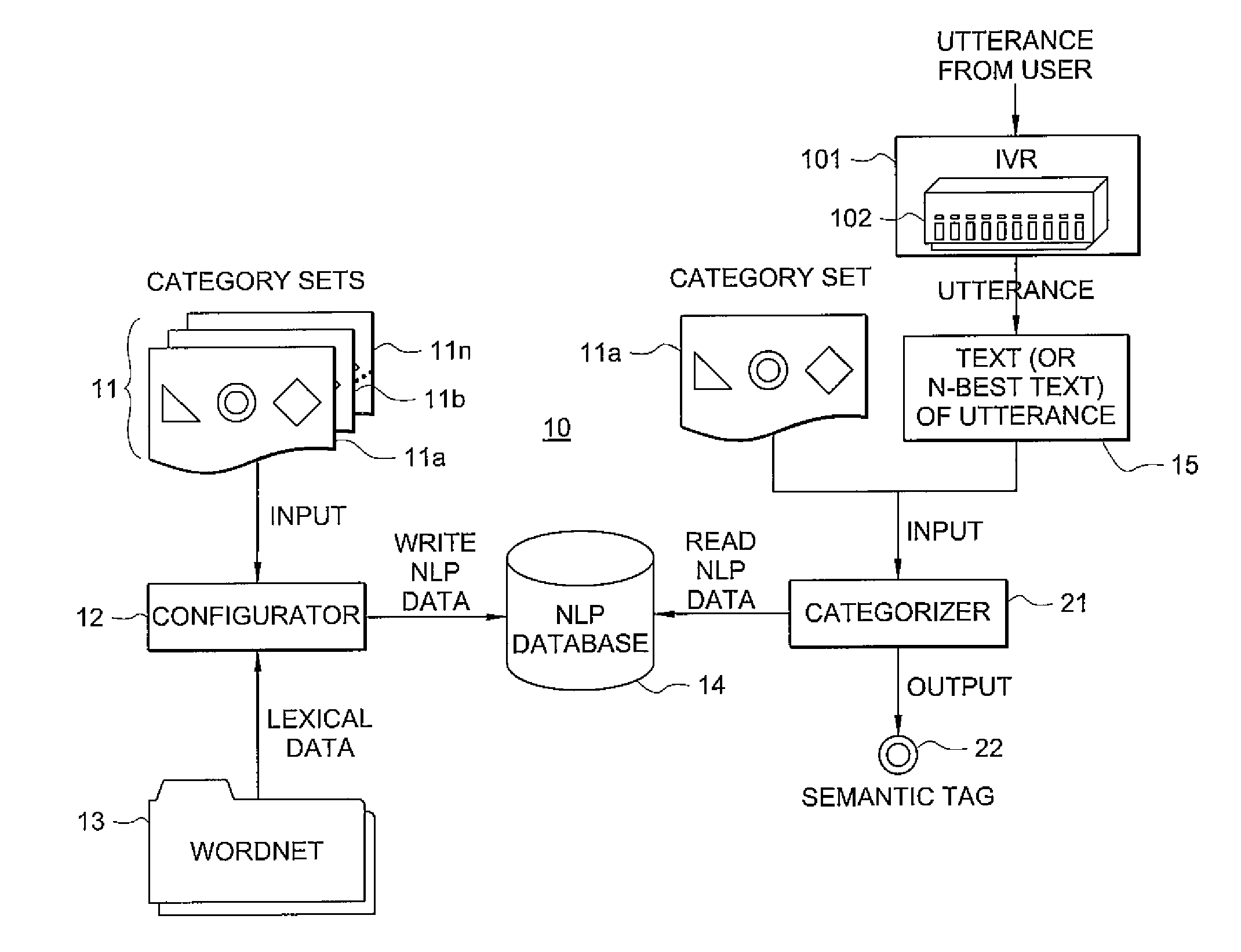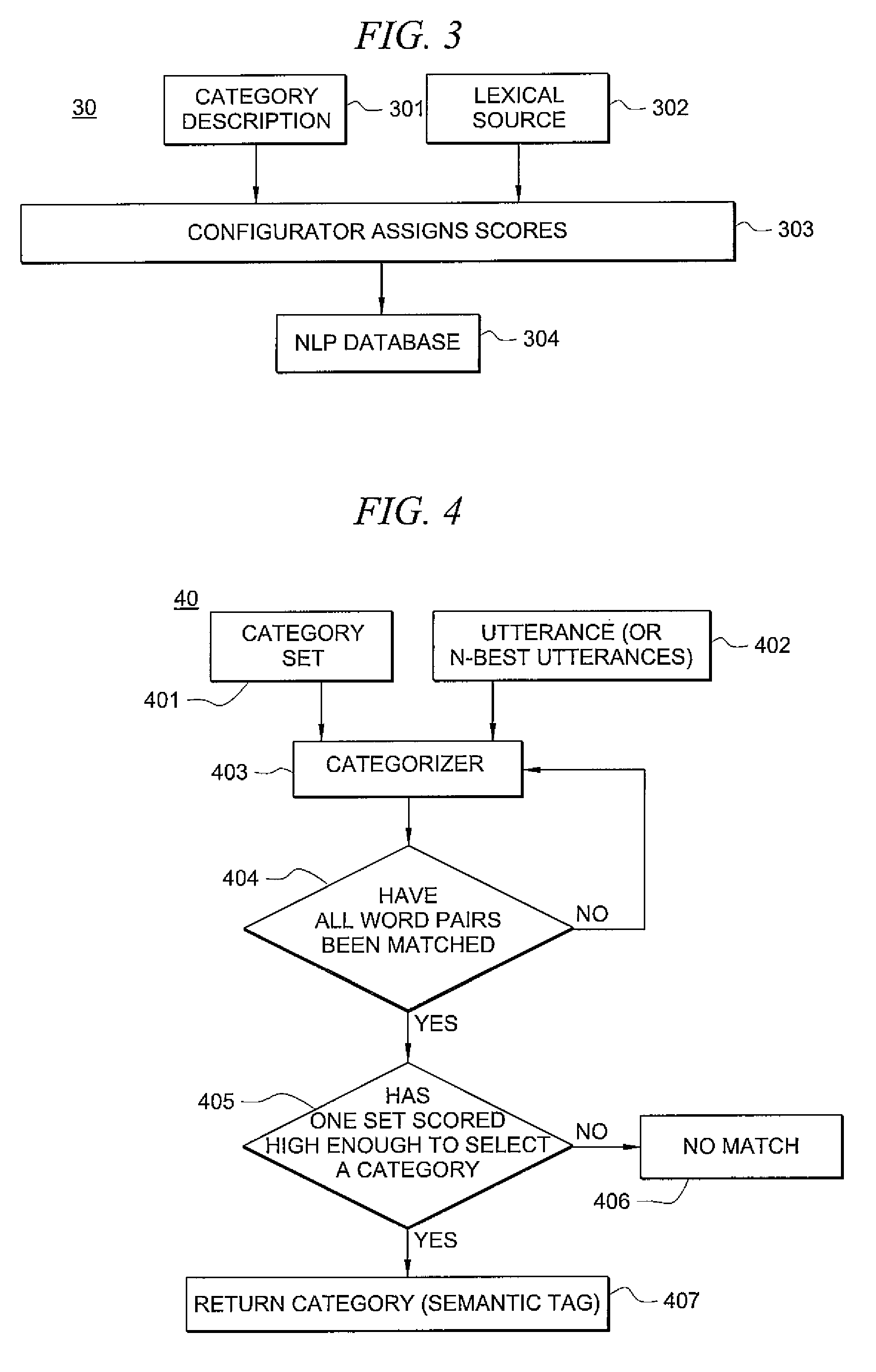System and method for semantic categorization
a semantic categorization and semantic technology, applied in the field of semantic categorization, can solve the problems of large manual involvement, laborious semantic categorization, and relatively restrictive dialogs
- Summary
- Abstract
- Description
- Claims
- Application Information
AI Technical Summary
Problems solved by technology
Method used
Image
Examples
Embodiment Construction
[0017]FIG. 1 shows one embodiment 10 of an architecture for performing the concepts of the invention. Note that the semantic categorizer shown in FIG. 1 is divided into two sets of processes. One set is the off-line processes, which includes everything to the left of database 14, and the other set which includes the on-line processes, everything to the right of database 14. The off-line processes are applied before the application is started, and may run for a lengthy period. The goal of the off-line processes is to generate data (word pairs and lexical chain confidence scores) to be stored in database 14 in a format that will allow fast categorization during a real-time dialog process. Once the database has been created, the on-line processes must work in near-real-time on user utterances, to prevent delays in the user's dialog with the system. Generally, the ASR and semantic categorizer must yield an answer to what task the user has requested, within a few tenths of a second, to m...
PUM
 Login to view more
Login to view more Abstract
Description
Claims
Application Information
 Login to view more
Login to view more - R&D Engineer
- R&D Manager
- IP Professional
- Industry Leading Data Capabilities
- Powerful AI technology
- Patent DNA Extraction
Browse by: Latest US Patents, China's latest patents, Technical Efficacy Thesaurus, Application Domain, Technology Topic.
© 2024 PatSnap. All rights reserved.Legal|Privacy policy|Modern Slavery Act Transparency Statement|Sitemap



